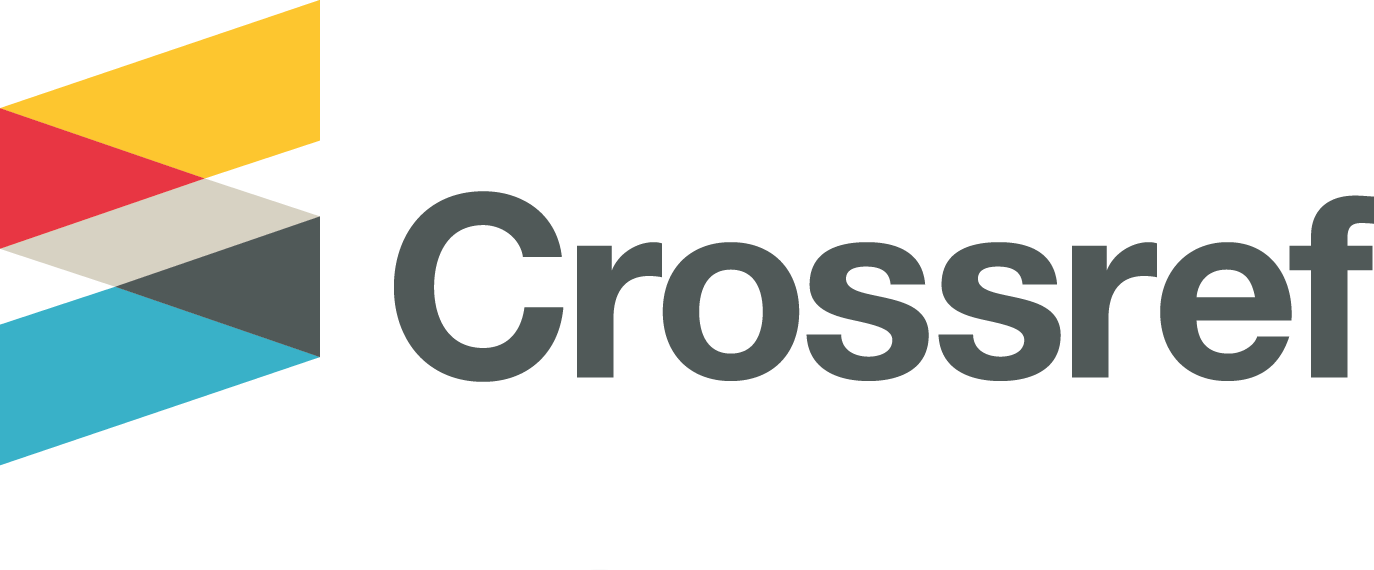The Impact of Social Media Use and Peer Pressure on Adolescent Cybercrime Behavior: The Mediation Role of Emotional Intelligence and Parental Supervision Moderation
Abstract
The use of social media has become an inseparable part of daily life, especially among teenagers. Social media also offers great potential in supporting learning. With access to various learning resources. To find out the influence of social media use and peer pressure on cybercrime mediated by emotional acuity and parental supervision. This study uses the Systematic Literature Review (SLR) approach to explore the relationship between social media use, peer pressure, cybercrime behavior in adolescents, emotional intelligence, and parental supervision. The results of this study are that excessive social media use and peer pressure can increase the risk of cybercrime behavior in adolescents, with low emotional intelligence as the main triggering factor. Emotional intelligence plays an important role as a mediator in reducing the negative impact of social media, while parental supervision can weaken the influence of peer pressure. The implications of these findings emphasize the need for collaboration between families, schools, and the government in developing educational programs that target emotional management and healthy social media use, to prevent the involvement of adolescents in illegal activities in cyberspace.
Penggunaan media sosial sudah menjadi bagian yang tidak terpisahkan dalam kehidupan sehari-hari, khususnya di kalangan remaja. Media sosial juga menawarkan potensi besar dalam menunjang pembelajaran. Dengan akses ke berbagai sumber belajar. Untuk mengetahui pengaruh penggunaan media sosial dan tekanan teman sebaya terhadap kejahatan dunia maya yang dimediasi oleh ketajaman emosional dan pengawasan orang tua. Penelitian ini menggunakan pendekatan Systematic Literature Review (SLR) untuk mengeksplorasi hubungan antara penggunaan media sosial, tekanan teman sebaya, perilaku cybercrime pada remaja, kecerdasan emosional, dan pengawasan orang tua. Hasil penelitian ini adalah penggunaan media sosial yang berlebihan dan tekanan teman sebaya dapat meningkatkan risiko terjadinya perilaku cybercrime pada remaja, dengan rendahnya kecerdasan emosional sebagai faktor pemicu utamanya. Kecerdasan emosional berperan penting sebagai mediator dalam mengurangi dampak negatif media sosial, sedangkan pengawasan orang tua dapat melemahkan pengaruh tekanan teman sebaya. . Implikasi dari temuan ini menekankan perlunya kolaborasi antara keluarga, sekolah, dan pemerintah dalam mengembangkan program pendidikan yang menyasar pengelolaan emosi dan penggunaan media sosial yang sehat, untuk mencegah keterlibatan remaja dalam aktivitas ilegal di dunia maya.
Keywords
Full Text:
FULL TEXTReferences
Aiken, M., Davidson, J., Walrave, M., Ponnet, K., Phillips, K., & Farr, R. (2024). Intention to Hack? Applying the Theory of Planned Behaviour to Youth Criminal Hacking. Forensic Sciences, 4(1), 24–41.
Alwali, J., & Alwali, W. (2022). The relationship between emotional intelligence, transformational leadership, and performance: A test of the mediating role of job satisfaction. Leadership & Organization Development Journal, 43(6), 928–952.
Appel, G., Grewal, L., Hadi, R., & Stephen, A. (2020). The future of social media in marketing. Journal of the Academy of Marketing Science, 48(1), 79–95.
Armsden, G., & Greenberg. (1987). The inventory of parent and peer attachment: Individual differences and their relationship to psychological well-being in adolescence. Journal of Youth and Adolescence, 16(5), 427–454.
Atika, S. (2015). Psychological Well-Being Pada Kepala Keluarga yang Mengalami Pemutusan Hubungan Kerja. Psikoborneo, 3(2), 1–16.
Azkiyati, N. (2018). Hubungan konflik peran ganda dan manajemen waktu dengan stres kerja Pada wanita menikah yang berprofesi sebagai guru. Psikoborneo, 6(1), 9–16.
Brewer, R., Whitten, T., Logos, K., Sayer, M., Langos, C., Holt, T., & Goldsmith, A. (2023). Examining the Psychosocial and Behavioral Factors Associated with Adolescent Engagement in Multiple Types of Cyberdeviance: Results from an Australian Study. Results from an Australian Study. Journal of Child and Family Studies, 32(7), 2046–2062.
Burns, A., Roberts, T., Posey, C., Lowry, P., & Fuller, B. (2023). Going beyond deterrence: A middle-range theory of motives and controls for insider computer abuse. Information Systems Research, 34(1), 342–362.
Chen, J., Chang, C., Wang, Z., Wang, L., & Wei, H. (2021). Cyber deviance among adolescents in Taiwan: Prevalence and correlates. Children and Youth Services Review, 1(25), 1–124.
Deka, D. (2022). Psychological Factors in Property Crimes: Theories, Traits, and Treatment. In Victimology: A Comprehensive Approach to Forensic, Psychosocial and Legal Perspectives. Springer International Publishing, 1(1), 283–311.
Dziopa, F., & Ahern, K. (2011). A systematic literature review of the applications of Q-technique and its methodology. Methodology, 1(1), 1–18.
Firnando, J. , R. S. A. , Sejati. R. A. , S. A. Z. , R. S. N. , & S. L. (2025). Financial QuotientGenerasi Z: Lifestyle Exposuredan Strategi Manajemen Risiko dalam Penggunaan Pinjaman Online. Jurnal Psikologi : Jurnal Ilmiah Fakultas Psikologi Universitas Yudharta Pasuruan, 12(1), 84–104.
Gonzales, M. (2022). Emotional Intelligence and Adolescent Mental Health. In Emotional Intelligence for Students, Parents, Teachers and School Leaders: A Handbook for the Whole School Community. Springer Singapore, 1(1), 295–322.
Guo, S., & Park, H. (2024a). Cyberbullying Among Adolescents in East Asian Societies: Explanations Based on General Strain Theory. International Journal of Bullying Prevention, 1(1), 1–15.
Gupta, N., Yadav, S., Rathore, S., & Sikarwar, P. (2023). The Influence Of Social Media On Mental Health Of Youth. Journal of Namibian Studies: History Politics Culture, 33(1), 1944–1943.
Herrerías, A., Torres, M., Guerrero, A., & Terrón, P. (2023). Cyberaggression and cybervictimisation in school youth-the influence of age and sex. World Transactions on Engineering and Technology Education, 21(1), 18–25.
Ho, H., Luong, H., & Phan, Q. (2024). Mapping the Influences of Social Network Site Use on Cybercrime Victimization: Trends and Recommendations. Asian Communication Research, 21(1), 80–106.
Kamboj, S., & Sharma, M. (2023). Social media adoption behaviour: Consumer innovativeness and participation intention. International Journal of Consumer Studies, 47(2), 523–544.
Lee, Y., Kim, J., Jennings, W., & Wu, E. (2024). Trajectories of Software Piracy and Multi-Domain Predictors. Crime & Delinquency, 1(1), 1–17.
Lestari, W. (2020). Pengaruh Konsep Diri dan Konformitas Terhadap Perilaku Bullying. Jurnal Psikoborneo: Jurnal Ilmiah Psikologi. Jurnal Psikoborneo: Jurnal Ilmiah Psikologi, 7(2), 4662–4671.
Lu, X., Wang, Y., Chen, X., & Lu, Q. (2024). From Stress to Screen: Understanding Cyberloafing through Cognitive and Affective Pathways. Behavioral Sciences, 14(3). https://doi.org/10.3390/bs14030249
Lytle, R., Bratton, T., & Hudson, H. (2021). Bystander apathy and intervention in the era of social media. The Emerald International Handbook of Technology-Facilitated Violence and Abuse, 1(1), 711–728.
Mazloom, M., Monika, A., Samaneh, A., & Fahimeh, D. (2024). Parents’ Wisdom and Adolescents’ Cognitive, Social, and Emotional Developmental Qualities. Journal of Familly Issues, 45(3), 616–646.
McCuddy, T. (2021). Peer delinquency among digital natives: The cyber context as a source of peer influence. Journal of Research in Crime and Delinquency, 58(3), 306–342.
Mubara, K. (2017). Smartmom untuk Generasi Smart: Panduan Parenting di Era Digital (1st ed., Vol. 1). Diva Press.
Noshili, A., Batool, R., Najmi, A., Najmi, M., Abiri, H., Khubrani, F., & Hamzi, J. (2022). Relationship between personality trait, and mental health well-being, the mediating role of emotional intelligence among healthcare workers in Jizan, KSA. Journal of Positive School Psychology, 6(10), 1833–1851.
Nurlita. (2019). Gratitude dan Psychological Well-Being Pada Mantan Penderita Obesitas yang Menjalani Gaya Hidup Sehat. Psikoborneo, 7(4), 1–13.
Palmieri, M. (2022). Decrypting Personality: The Effects of Motivation, Social Power, and Anonymity on Cybercrime. Massachusetts Lowell, 1(1), 1–14.
Permadi. (2019). Pengaruh Atraksi Interpersonal, Kewajiban Moral dan Kontrol Perilaku Terhadap Sikap Ramah Lingkungan. Psikoborneo, 7(4), 1–14.
Rahman, P. R. U., Riza, W. L., & Ramadan, R. (2024). The Contribution of Parental Attachment to Adolescent Moral Intelligence. Proceedings of the 4th Borobudur International Symposium on Humanities and Social Science 2022 (BIS-HSS 2022), 566–573. https://doi.org/10.2991/978-2-38476-118-0_65
Rita, A., Widodo, W., & Susila, S. (2024). Model for social intelligence and teachers’ innovative work behavior: serial mediation. Cogent Education, 11(1), 1–18.
Rueda, P., Cerezo, M., Kumari, & Vishwakarma. (2024). The Role of Emotional Intelligence in Adolescent Bullying: A Systematic Review. . . Indian Journal of Extension Education, 28(1), 53–59.
Shah, M., Vanpariya, B., & Vansiya, Y. (2023). Emerging Trends in Social and Allied Sciences. Researcgate, 1(1), 1–17.
Shin, W., & Kim, H. (2023a). Problematic mobile phone use and cyberbullying perpetration in adolescents. Behaviour & Information Technology, 42(4), 424–443.
Shin, W., & Kim, H. (2023b). Problematic mobile phone use and cyberbullying perpetration in adolescents. Behaviour & Information Technology, 42(4), 424–443.
Sikra, J. (2022). Improving cybercrime reporting in Scotland: a systematic literature review. Straft, 1(1), 1–18.
Smith. (2024). Integrated Model of Cybercrime Dynamics: A Comprehensive Framework for Understanding Offending and Victimization in the Digital Realm. International Journal of Cybersecurity Intelligence & Cybercrime, 7(2), 1–10.
Stockmann, A., Weber, M., Reinecke, L., Schemer, C., Müller, K., Beutel, M., & Stark, B. (2021). socialization: The role of mobile media and communication in autonomy and relationship development in adolescence. Mass Communication and Society, 24(6), 867–891.
Supriyanti, W., & Maryam, M. (2021). Pelatihan Aplikasi Parental Control Guna Membangun Kebiasaan Penggunaan Gadget Yang Sehat Pada Anak. Abdi Teknoyasa, 1(1), 38–45.
Wang, P., Wang, J., Yan, Y., Si, Y., Zhan, X., & Tian, Y. (2021). Relationship between loneliness and depression among Chinese junior high school students: the serial mediating roles of internet gaming disorder, social network use, and generalized pathological internet use. Frontiers in Psychology, 1(1), 1–18.
Whittemore, R., & Knafl, K. (2005). The integrative review: updated methodology. Journal of Advanced Nursing, 52(5), 546–553.
Wilkinson, R. (2004). The role of parental and peer attachment in the psychological health and self esteem of adolescent. Journal of Youth and Adolescence, 1(1), 479–493.
Wirman, W., Sari, G., Hardianti, F., & Roberto, T. (2021). Dimensi konsep diri korban cyber sexual harassment di Kota Pekanbaru. Jurnal Kajian Komunikasi, 9(1), 79–93.
Xinyuan, Yizhou, W., Xiaoxiao, C., & Quan, L. (2024). From Stress to Screen: Understanding Cyberloafing through Cognitive and Affective Pathways. Behavioral Science, 14(3), 1–19.
Zhuge. (2020). Cyber-Physical-Social Intelligence (1st ed., Vol. 1).
DOI: http://dx.doi.org/10.30872/psikoborneo.v13i4.22549
Refbacks
- There are currently no refbacks.
Copyright (c) 2025 Tina Khostarina, Nur Aisyah Rahmani Nasution, Chayrina Ramida

This work is licensed under a Creative Commons Attribution-ShareAlike 4.0 International License.
PSIKOBORNEO: Jurnal Ilmiah Psikologi Published by Faculty of Social and Political Siences, University of Mulawarman, Samarinda, East Kalimantan and This work is licensed under a Creative Commons Attribution-ShareAlike 4.0 International License.
________________________________________
PSIKOBORNEO: Jurnal Ilmiah Psikologi
Department of Psychology
Faculty of Social and Political Siences, University of Mulawarman
Jl. Muara Muntai Kampus Gn. Kelua Samarinda 75411
Phone: +62 813 35350368
E-Mail: psikoborneo@gmail.com / psikoborneo@fisip.unmul.ac.id
















